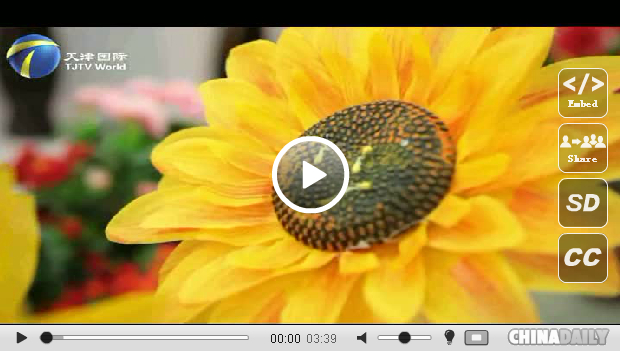TIANJIN - A newly imposed limit on private car ownership in north China's Tianjin Municipality has caught citizens unprepared, prompting questions over the rule's abruptness and necessity.
The Tianjin municipal government announced on Sunday evening that the city would impose a quota on its new car license plates, requiring residents to obtain a plate through either bidding in auctions or joining lotteries.
The policy, as part of the city's efforts to battle congestion and air pollution, took effect only five hours after its announcement at 7 p.m., touching off panic-buying of both new and second-hand vehicles.
On Sunday night, car dealers in Tianjin were teeming with anxious customers, some of whom rushed to the store even without changing their pajamas or work clothes.
To handle the purchase frenzy, some stores temporarily required all buyers to pay in full and rejected phone orders.
"The rule came in such a hurry. Why not hold a hearing beforehand to solicit opinions from citizens? Or at least they can pilot the scheme for some time before making it a permanent policy," said a postgraduate student surnamed Cao in Tianjin.
Cao planned to purchase a home in the city's outskirts, where house prices are much lower than downtown areas, and then buy a car to commute to work after her graduation next year. However, the car-buying restriction wrecked her plan.
"Also, I don't think bidding for car plates is fair to ordinary working-class people, since the rich can simply pay extra money to bypass the limit," she said.
So far, the city government has not revealed details on the quota or how many plates will be allocated by lottery compared with auction.
Previously, Beijing, Shanghai, Guangzhou and Guiyang have restricted the number of vehicles registered each year.
Beijing and Guiyang issue plates through a lottery while Shanghai uses a bidding scheme. Guangzhou adopts both systems, half issued through bidding, the other half through a lottery.
Between the Guangzhou city government announcing the limit in June and the rule taking effect, there were only three hours for residents to snap up cars.
Guan Xinping, a sociology professor at Tianjin-based Nankai University, said the government of Tianjin made the abrupt announcement of the car-buying limit in the evening in order to avoid stronger social panic and other over-reactions.
"If the policy had been unveiled a month before it took effect, that would have triggered a longer period of panic-buying," said Guan.
Even though the government's intention was understandable, he said, its approach may not be the best option.
"Authorities should fully consult the public before rolling out a rule like this, which affects the interests of many people," according to the professor.
In fact, there were hints of the car-buying limit in Tianjin earlier this year. In August, a development guideline issued by the city government said it would consider curbing the number of cars on the road. In early December, the city's deputy mayor made similar remarks in a TV show on the state television network CCTV.
QUICK FIX
Another controversy swirling around the policy is whether the city, with 2.36 million motor vehicles registered in 2012, really needs to follow the step of Beijing, which has 5.3 million cars.
In addition to the purchase limit, the Tianjin government said on Sunday that it would also adopt a traffic restriction scheme, which keeps cars off the roads depending on the last digit of their plates, copying Beijing's move starting five years ago.
The ban, which will come into force on March 1 next year, is expected to take one-fifth of the city's private cars off the roads on workdays.
A statement from the city government said the "explosive" growth of car ownership, a surge of a million in the past three years, has resulted in severe traffic gridlock.
Previous government data indicated that vehicle emissions account for 16 percent of the city's fine particulate matter PM2.5, constituting an important contributor to its lingering smog.
The buying limit and traffic restriction will certainly restrain the number of vehicles, but they are not permanent solutions, warned Li Yuheng, a senior researcher with CIConsulting, a leading domestic consulting firm specializing in industry research.
The fundamental problems are the excessive concentration of the city's resources and defective transport planning, Li said. He suggested the government transfer some industries away from the city's core areas.
Auto industry insider Jia Xinguang added that the most effective measure to alleviate traffic jams is to develop rail transit, which should handle at least 60 percent of the city's traffic flow.
"Counting on restrictions on vehicles to cure the 'city disease' is like giving cancer patients pain killers," Jia said.
Tianjin's mass transit systems lag far behind Beijing and Shanghai, as the city of 14 million people has only three subway lines.
In a guideline issued in September, the government of Tianjin set goals for the development of the public transport network.
It vowed to extend the length of the city's subway lines to 183 km and the length of exclusive bus lanes to 194 km, as well as increase its bus routes to 621 by 2015.





